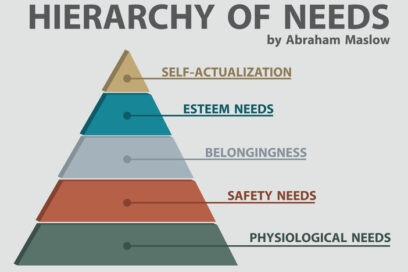Students are facing mental health issues at alarming rates, with suicide being a major concern. From 2001 to 2019, suicide rates rose by 40% among children and adolescents, and emergency department visits for self-harm increased by 88%. The CDC estimates that 1 in 5 children between the ages of 3 and 17 have a mental health disorder, totaling 15 million children. However, only 20% receive a diagnosis or necessary care.
The impact of these mental health challenges on our students and schools cannot be understated. They inevitably hinder students’ ability to engage and succeed in school and life. Additionally, student mental health needs do not happen in isolation. Student well-being is interconnected with that of their families and educators. During my experience as a teacher, school counselor and administrator, I have seen how a student’s mental health challenges impact, and are impacted by, their families and communities.
With the mental health of our students on all our minds, here are four ways educators can support students and improve well-being in schools.

Attend to all needs
People, and our students in particular, are not always the best at being aware of or communicating their needs. Maslow’s hierarchy of needs is a valuable tool for educators to keep in mind when faced with challenging behaviors from students, and even other adults, to better understand and respond to them. This pyramid-shaped framework starts with basic physiological needs at the bottom, followed by safety, love and belonging, self-esteem and self-actualization layered on top.
This psychological theory emphasizes that fulfilling essential needs is crucial for individuals to function at their full potential. For example, students who are tired, hungry, unwell, do not feel safe or are disconnected or disrespected will struggle to learn. As educators, we can use a variety of ways to incorporate a hierarchy of needs into our work and relationships. The most critical way before responding to a behavior is to pause and consider what might be contributing to it.
Some proactive approaches can be to make sure that students have access to food and health services at school. Supporting families to connect with community resources, including housing and health care, can further ensure that students’ basic needs are met. We can support emotional safety through mindfulness practices, self-esteem and respect through surveys and other mechanisms to solicit and incorporate student voice into decision-making. Encouraging student participation in mentorship programs, clubs, activities and student steering committees can also help students feel a greater sense of recognition and belonging.
By applying this theory in schools, educators can gain insight into the diverse needs of others and their students and tailor their responses accordingly. Keep in mind that every behavior — even from adults — is the communication of a need or an unmet need. That helps us pause and consider what might be contributing to a situation before we respond or take things personally.
Compassionate curiosity
Related to this is approaching others with compassionate curiosity to gain a better understanding of their needs. Leading with curiosity involves letting go of any preconceptions, actively seeking understanding and truly listening before responding.
Education attracts and expects a lot of caring, intelligent and highly competent people. However, it can be difficult to set aside our own experiences to embrace a deeper understanding of somebody else’s behavior. Compassionate curiosity encourages us to let go of our desire for answers and instead approach situations with expectations that are unrelated to the outcome. By creating safe ways for students, staff, and families to share challenges and genuinely listen to their responses, we cultivate understanding and community.

Connect with intention
To truly make a positive impact on our students we need to foster belonging in our classrooms and schools. Intentionally creating opportunities for students and staff to feel understood, known and connected is critical to improving student mental health and well-being.
It is important to recognize that respect, connection and recognition can look different to our students, their families and school staff based on their backgrounds and lived experience. For example, respect can vary across cultures. Some people feel recognized with public praise, and others prefer meaningful feedback in private.
A simple strategy when our students feel respected or disrespected is to ask what connection means to them and the types of recognition they appreciate. A helpful activity for staff members is to review how their students respond; discuss students who do not have strong connections with any staff members; and plan for ways to support them. Having the school or district leadership do something similar for staff would also be a powerful way to value staff members as individuals.
By understanding and utilizing this knowledge in our schools and classrooms, we can personalize our approaches to effectively connect with each other and our students in meaningful ways that resonate with individuals.
Prioritize yourself
You can accomplish anything, but trying to do everything is not realistic. It’s important to recognize your limits and set aside specific times for breaks and activities that allow you to disengage from work. Creating boundaries between work and your personal life is vital for preventing burnout and for your mental health.
If the pandemic has taught us anything, it’s that we have to take care of ourselves before we can take care of others. By recognizing and meeting our own needs first, we can better support our students and peers.
Among the constantly increasing demands placed on educators, the most important challenge, and the only thing we can control, is our own well-being and our response to outside events.
To truly support students struggling with their mental health, it is essential for us to recognize their needs and empower them with a sense of validation and understanding. By proactively addressing the challenges that these students encounter, we can create systems that not only listen to but truly hear their voices. In doing so, we provide them with the necessary support to overcome their struggles and flourish in their academic and personal growth.
Opinions expressed by SmartBrief contributors are their own.
_________________________
Subscribe to SmartBrief’s FREE email ASCD newsletter to see the latest hot topics in education. It’s among SmartBrief’s more than 250 industry-focused newsletters.
